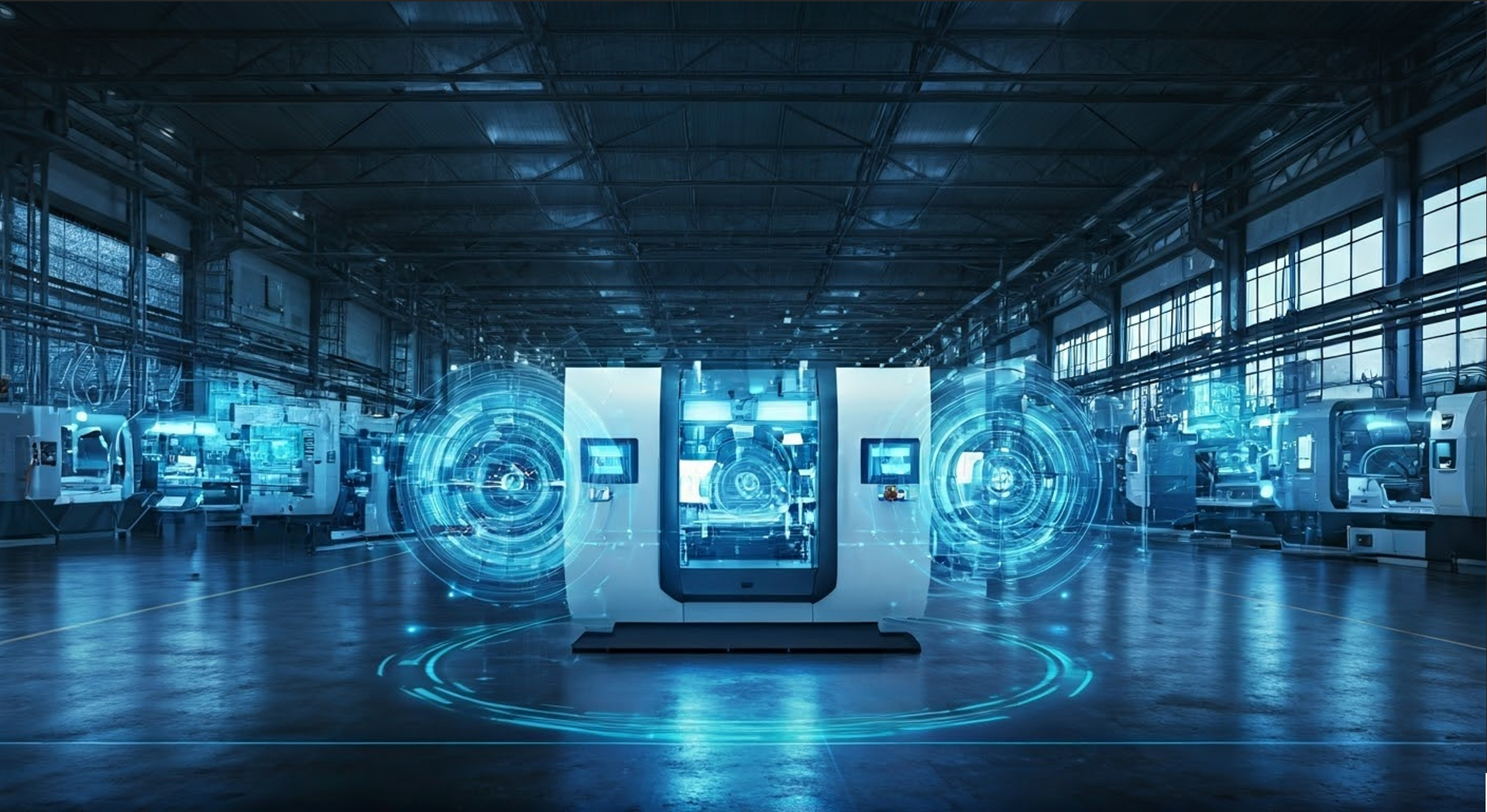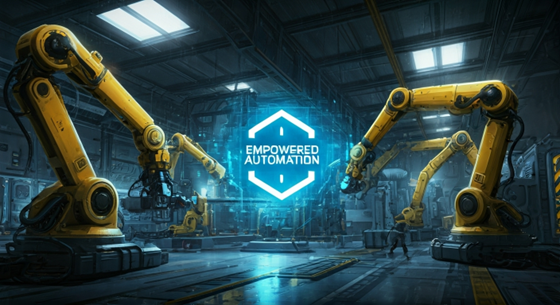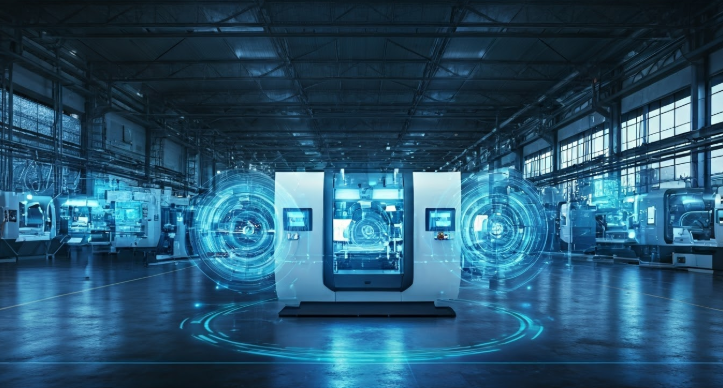Smart Factories: Revolutionizing Automatic Manufacturing
Smart Factories: The Future of Automatic Manufacturing
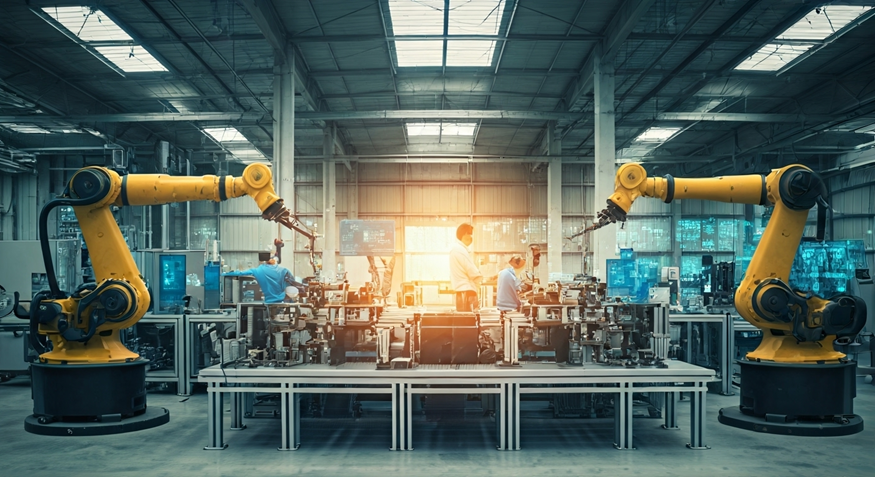
Key Highlights
• Smart factories integrate automated systems, including industrial robots and control systems, to revolutionize the manufacturing process.
• The Industrial Internet of Things (IIoT) connects smart machines on the factory floor, enabling real-time communication for advanced data analytics.
• Artificial intelligence and machine learning are driving quality control and process automation, reducing human error significantly.
• Robotic process automation and collaborative robots (cobots) streamline production processes, handling repetitive or dangerous tasks.
• The fourth industrial revolution fosters continuous improvement by combining automation technology with sustainable practices.
• Major companies across the automotive industry and electronics sectors are leveraging flexible automation for enhanced efficiency.
Smart factories are the top level of industrial automation. They use automated systems to change the modern manufacturing process. These factories bring together new tech, like machine learning, the internet of things, and control systems. This helps products get made faster and better. It also means people do not have to jump in as much.
Many industries see labor costs going up and have problems with their supply chain. Moving to smart, automated systems lets them work quicker and with more care across the entire production process. This gets more done and makes fewer mistakes. Now, people want to know how we got to this point with industrial automation and what might come next.
Understanding Smart Factories in Modern Manufacturing
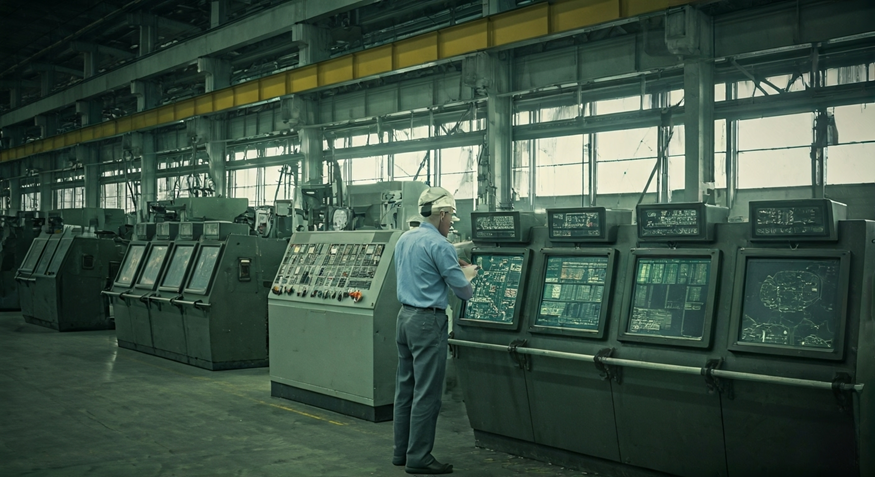
factories bring a new time for the manufacturing industry. The use of smart machines and data-based production processes helps these places do better work. They focus on staying fast, being flexible, and getting things right. The new technologies in these factories aim to boost efficiency. People and smart robots work together. This team helps to cut down on mistakes and brings up the quality of products.
Across the industry, smart factories are now a big part of dealing with problems. These issues include not having enough workers and seeing more competition. By using automated manufacturing systems, these businesses raise their standards for how work should be done. Smart factories also help start fresh ways for growth that last into the future.
Definition and Core Concepts of Smart Factories
A smart factory is a type of automated manufacturing system. It brings together control systems and smart algorithms to do many tasks with little help from people. These factories often use the internet of things (IoT) so machines can share data, connect, and help each other work better on the factory floor at all times.
The main idea here is to use enterprise resource planning (ERP) systems to keep track of production, inventory, and logistics. This helps pull everything together and lets things run smoother. Automation tools, artificial intelligence, and machine learning also help smart factories get great results in speed, accuracy, and size.
Vision systems play a big role in quality control by finding flaws with strong accuracy. This takes away human error, especially for jobs people do again and again. As tech changes and grows, these automated manufacturing systems keep changing how companies make things—from the first test item to big runs on the factory floor.
Evolution from Traditional to Smart Manufacturing
Manufacturing has changed a lot since the industrial revolution. At first, people used tools and their own strength. Most of the work needed a lot of human intervention. But with these old ways, it was hard to get good quality control, especially when the jobs got big.
Things really started to change in the third industrial revolution. New machines came in that you could program. Early robots helped make process automation better. Because of this, automated manufacturing systems became common. The machines could do jobs faster and better than people could.
Now,
smart factories are a big thing in the
fourth industrial revolution. These places use
artificial intelligence and the
internet of things to let machines talk to each other right away. By linking all these devices with
programmable automation, we can get high accuracy and make more products. This change is still going on, and it focuses on getting jobs done quicker, being able to change fast, and always coming up with something new in the
production processes.
Key Technologies Powering Smart Factories
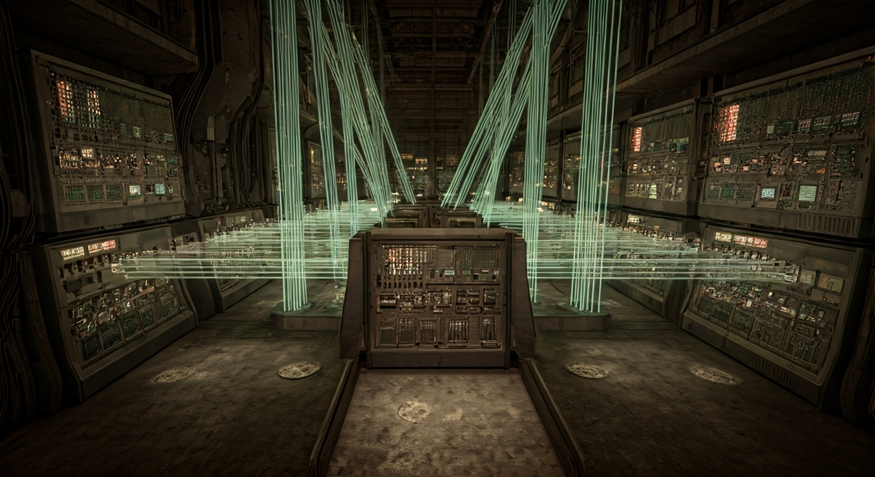
New technologies drive smart factories. These ideas are changing the way products are made, designed, and sent out. Automation technology lets machines do the same job again and again. Programmable devices and vision systems help them be faster and do a better job.
Factories use
industrial robots with IoT sensors, so all parts can talk to each other. This keeps things running smoothly and saves time. These tools bring more accuracy, clearer views of how things work, and early warning signs if something might go wrong. Because of this, factories can do more, waste less, and keep up with others in the market.
Industrial Internet of Things (IIoT)
The way companies customize and improve how they make things now depends a lot on connected devices. This is possible because of the Industrial Internet of Things (IIoT). Companies use programmable devices and smart machines on the factory floor to collect real-time data. They use this data to help make their work better and faster.
When industrial robots, sensors, and control systems work together, they can spot problems before they happen. This means it is easier to fix things as soon as something seems wrong. It also helps lower human error. In the end, this setup helps boost product quality and makes less harm to the environment.
The internet of things lets the manufacturing industry make big changes in the fourth industrial revolution. With IIoT, companies can see how to speed up the entire supply chain and keep things running smoothly from start to finish.
Role of Artificial Intelligence and Machine Learning
Using artificial intelligence and machine learning in factories has changed the way work is done. People now use automation tools to help with better choices. These tools look at production data to know when machines need care, handle resources, and make the work smoother. They cut the need for too much human intervention and help things run better.
AI-powered systems are great at quality control. They notice mistakes that people might miss. With vision systems, these tools keep product quality high and help cut down on waste. Smart computer programs also change how things are made so factories can keep up with demand.
In smart factories, artificial intelligence improves how well automation solutions work, such as using robots and handling orders. With these changes, factories work faster, safer, and stronger. AI makes sure manufacturers keep up with the world and do well in the future.
Automation Systems in Smart Factories
Automation is made up of different ways and tools. These are made to fit the wants of each factory. You will see industrial robots taking care of the production line. Many use control systems too. The different types of automation help the team work better by making things more exact and cutting down on waste.
Most factories use a mix of hard automation for jobs that repeat and flexible automation for jobs that change often. When manufacturers put programmable devices into what they do, they get the best of both. They can have a lot of products in a short time and still adjust to new needs.
Robotics and Collaborative Robots (Cobots)
Bringing robotics into the workplace, especially with collaborative robots (cobots), is changing the way factories work. These machines are built to help human workers and make people more productive on the factory floor. Cobots take over dangerous tasks, so there is less need for human intervention. Thanks to their programmable automation, cobots can quickly switch between different production processes. This gives them flexibility that regular industrial robots may not have.
Cobots use artificial intelligence and machine learning. These tools let them learn and adjust as they work. When you have people and cobots working together, there are fewer mistakes and jobs run more smoothly. This teamwork helps all of us reach new levels of continuous improvement in our manufacturing results.
Computer-Integrated Manufacturing (CIM)
The way people make things has changed a lot because of computer-integrated manufacturing (CIM) systems. With the help of automated systems, these new tools can connect each part of the production line. This type of automation boosts how well things work from start to finish.
CIM uses control systems and artificial intelligence. Together, these make everything run smoother, help cut down on human error, and make quality control better. When manufacturing plants start to use CIM, they see a big improvement in inventory management and get more flexible. This means they can change what they do fast when the market changes.
Because of all this, it has become very important for businesses in the manufacturing industry to use CIM. This way, they keep up with others and stay strong in a fast-moving world.
Major Applications of Smart Factories
Smart factories help manufacturing plants in many fields. They make production processes smoother and easier to manage. With automation solutions, these places can cut down on costs, make product quality better, and keep everyone safer. This makes smart factories very important for big companies.
Automated systems help with everything from additive manufacturing to inventory management. They help manufacturing plants run in a better and faster way. These automation solutions can help factories make more and spend less. Many companies now use these systems to face new challenges and find new ways to work better.
Automotive and Aerospace Manufacturing
Applications in the automotive industry show what automation solutions can do. They help by keeping things steady, fast, and clear every time. Robots work on assembly lines. They make more products with fewer mistakes and help speed things up.
In aerospace, additive manufacturing helps build light parts with designs that are hard to copy. This means better performance. Automated systems check each step and make sure every process meets the high quality needed. From putting things together to checking them, these systems help all the time.
Industry leaders use automation technology to deal with labor costs and reach the goals that matter most to them. Automation solutions and these new ways of working open up many new chances for both the automotive industry and aerospace.
Electronics and Consumer Goods
In electronics manufacturing, automated quality control helps to find mistakes before parts go out. This makes sure every circuit board and chip comes out right. Using flexible automation, the team can work with many kinds of parts. This lets them keep up with fast changes and make each item the same every time.
In the consumer goods sector, inventory management plays a big role. Smart devices watch what goes in and out. They know when people might want something and help keep things in stock. The benefits of automation can help make products that fit what people like now.
Manufacturers in both Electronics and FMCG depend on automation to help them grow. It helps them scale up and make their customers happy.
Benefits of Adopting Smart Factory Solutions
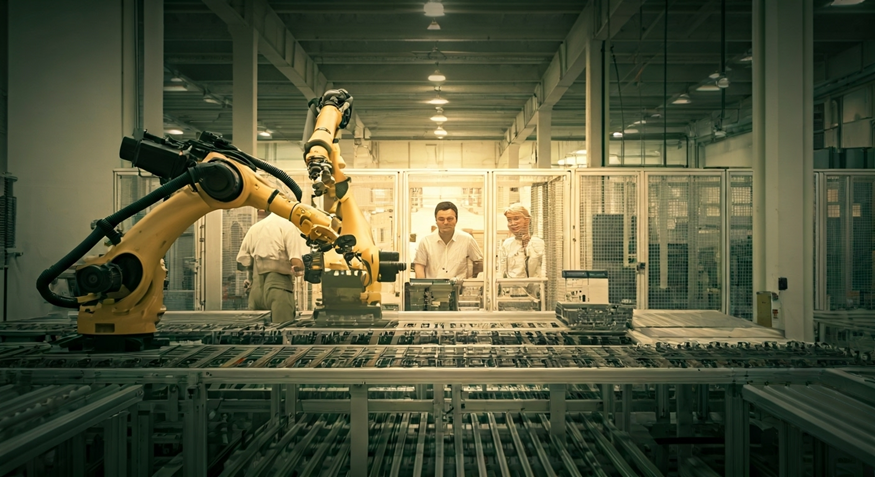
Using smart factory solutions gives many big benefits that change how people build things. You get more efficiency by making sure your production processes are better, using automated systems and machine learning. This helps bring down labor costs and cuts down on human error. You also see more product quality and steady results because of strong quality control, which means every product sticks to tough standards. On top of that, these smart options help with better strategic planning for the entire supply chain. This makes it easier to adjust to what the market needs and pushes people to keep working on continuous improvement of every output and the work itself.
Increased Efficiency and Productivity
Better operational efficiency depends on how well automated systems and advanced analytics work together. When manufacturing plants use control systems and machine learning, they can make their production processes better. This helps cut down on downtime and labor costs. With artificial intelligence taking care of complex tasks, human workers get to do more important jobs. This leads to continuous improvement.
The production line runs smoother, helping the whole team work together. This boosts productivity and keeps human error low. These changes show a big step forward for the manufacturing industry. Now, there is more focus on making things better and working well as one unit.
Enhanced Product Quality and Consistency
Using automated systems in the manufacturing industry helps improve product quality and makes the process more steady. When you use the latest control systems and add machine learning, human error goes down a lot. This means each step of making a product will meet good quality control. Also, when companies use industrial robots and smart machines, the products come out the same every time. These tools help make sure there are fewer changes from one product to the next. This level of trust and dependability makes customers happy. This can bring in better results and make work more efficient. It also shows how important quality is in the manufacturing industry.
Challenges and Barriers to Smart Factory Implementation
Moving to smart factory solutions is not always easy. One big problem is bringing in new technology and having it work with the old systems that many manufacturing plants still use. This can make the whole manufacturing process more complex and may interrupt how things usually get done. There are also big worries about keeping data safe. When manufacturing plants start using automated systems and artificial intelligence, the need to keep important information private and safe becomes very important. To get through these problems, it is key to use strategic planning and focus on continuous improvement. This helps the move toward a fully automated manufacturing environment happen in a smooth and steady way.
Integration with Existing Legacy Systems
Legacy systems can bring many problems when used with smart manufacturing. Bringing together these old systems and new automation solutions needs planning. It is important to balance the old control systems and smart technologies like AI and machine learning. The hard part is making sure the whole production process keeps running well. You do not want to stop operations or have trouble when the systems talk to each other. Good planning and doing the job the right way help cut down on human error. Also, using robots and old equipment together can be smart. This can make the work get done faster and often bring down labor costs. In the end, the use of robots, better automation solutions, and control systems across the entire production process can make your business work in a better way.
Cybersecurity and Data Privacy Concerns
The use of smart tech in automated systems brings some risk of cybersecurity problems. With the Internet of Things being part of these setups, there is a bigger chance that someone might break in and take sensitive data. It is now more important than ever to set up strong security steps as more work is being done by machines. Keeping safe from online attacks helps keep the full manufacturing process safe. It also helps keep both product quality and the trust of everyone involved. When you put cybersecurity first, you make sure the manufacturing can go on no matter what new problems might come up.
The Future Landscape of Automatic Manufacturing in the US
Automatic manufacturing is changing the U.S. in many ways. The use of smart machines and the internet of things is becoming important. Artificial intelligence and machine learning will help make better choices in the workplace. Flexible automation will let factory floor workers and owners adjust more easily to new work needs.
As companies focus on being green, we will see more green practices in making products. This matches what people want from the things they buy. At the same time, human workers must learn new skills to keep up. With upskilling, people and automated systems can work together in this new kind of factory. This is how the work world is growing and changing now.
Workforce Transformation and Upskilling
Workforce change means there is a need for a plan when it comes to learning new skills, as automation keeps growing in factories. By using new tools like machine learning and artificial intelligence, people can do well in a place where there are more and more automated systems. Training that helps build new hands-on skills helps human workers work side by side with smart machines. This teamwork helps cut down human error and keeps work going strong. These steps not only lift worker morale, but they also help businesses get ready for the fourth industrial revolution. In the end, companies will have a faster-moving and creative group of people who can handle complex tasks during big changes.
Sustainable and Green Manufacturing Practices
The move to more sustainable and green manufacturing is a big step for the industry. Using automation technology helps cut down waste and saves energy by making production processes better. When companies use renewable resources and energy-efficient machine tools, they follow social responsibilities and also save money. Adding programmable automation and IoT solutions helps people see more of what is going on in the supply chain. This makes it easier to track resource use and lower the harm to the environment. Choosing these new ways shows the company wants a better and more sustainable future.
Conclusion
Moving to smart factory solutions is a big step for companies who want to work better and faster. Bringing in automated systems, collaborative robots, and advanced analytics helps make production processes smoother. These tech tools also help make sure that product quality is high and the results are always the same. There may be some tough problems to solve when starting out, but the good things about using these new systems are much greater. Adding these changes helps with continuous improvement and lets companies keep their spot in a fast-changing business world. In the end, to grow in a smart way, companies need to focus on innovation and being able to change when needed.
Frequently Asked Questions
What makes a factory “smart”?
Smart factories use new technology like the Internet of Things, robots, and data analysis. These systems work together to help watch what's going on in real time. They let people find problems before they happen and make better choices. When you let machines talk to each other and do some jobs on their own, you get more work done and can react faster in the factory. This helps the business work better and move with changes in the world.
Are smart factories replacing human jobs?
Smart factories do not take away all human jobs, but they change how people work. Many jobs now need people to watch over machines, do maintenance, and work with new technology. Workers need to learn new skills to keep up and do well in this type of manufacturing.
How do smart factories improve product quality?
Smart factories use new technology like IIoT and AI. These tools help to keep an eye on the work as it happens and check the data right away. This helps make sure the work stays the same each time. It also cuts down on mistakes and lets people fix problems fast. Because of this, the production processes get better, the product quality goes up, and customers are happier.
What industries benefit most from smart factories?
Smart factories help many industries like automotive, electronics, and consumer goods. These sectors use automation, data analytics, and robotics to make their production faster. They also use these tools to keep quality high and lower their running costs. The flexibility of smart factories lets them keep up with customer needs as they change.
How secure are smart factory systems?
Smart factory systems have many cybersecurity threats. These can be hacking and data breaches. To keep these systems safe, it is good to use strong plans like using encryption, doing regular software updates, and training employees. It is important to fix any weak points. This helps keep the factory running well and also protects private data in these automated manufacturing areas.

